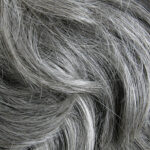Let’s face it: most of us have experienced weight gain to some degree at one time or another. Whether it’s because we ate too much while stressed or bored during the pandemic or for another reason, we suddenly find our pants are not fitting like they used to. (How were we to know after two years of wearing nothing but leggings and yoga pants?)
But it’s not just food that can result in weight gain. Certain medications can cause extra pounds to accumulate, as can hormonal fluctuations and insomnia.
No matter how the added pounds got there, we must dress our bodies daily. Punishing ourselves by refusing to buy anything new and trying to squeeze into clothes that no longer fit is not the answer. Weight gain is not a personal failure.
Dressing your best, regardless of weight or size, is the solution. When we look good, we feel good.
We absolutely know how overwhelming and even emotional it can be when you’re trying to get dressed and nothing fits as it used to. Clothing is an extension of ourselves, a semaphore for how we see the world and how we want it to see us, and with a change in size, there’s often a shift in how we view ourselves.
However, you have not changed. What’s needed is to create what we like to call a transition wardrobe. Your clothes should make you feel and look good no matter your current size. The joy and confidence you’ll have will make getting back into shape or down to your best weight easier.
Here are some tips on how to dress after weight gain. And note we’re not advocating buying an entirely new wardrobe. There’ll be pieces in your closet that you can still wear and pieces that you don’t need to replace immediately.
1. Start with what you have in your closet.
Be sure that the only clothes in your closet are for the current season. Now, try everything on. That’s right, everything. (Yes, it’s sad and triggering, so take your time.) You’ll want to take anything that does not fit out of the closet or put it in a separate section. Everything that fits should be easily accessible. This allows you to assess what you have and determine what’s missing. Maybe you have sweaters, blouses, and skirts that work but no jeans or trousers. Start a list of what you’ll need to round out a capsule of go-to pieces. I suspect a new pair of jeans and dark trousers (navy, brown or black) might be on your list. Remember, you’re creating and investing in a transition wardrobe.
Always keep in mind where you go and what you do on any given day of the week. Do you go to an office, to dinners and parties, and on dates? Do you normally run a lot of errands? If so, you’ll need to replace the kinds of clothes you feel you need for those activities. But again, you don’t have to break the bank. Go only with what will get you through the next few months.
2. Wear the Correct Size.
Not the size you want to be. Your actual size. Clothing that is too small will pucker in the most unflattering ways, reveal lots of lumps and bumps, and, quite frankly, make you look bigger. You want pieces that “skim” your body—more on the “fitted” side. So, determine your new size and purchase the pieces you’ll need for the near future. Remember, with a good tailor, you can alter most well-made pieces by at least 2 sizes. Keep this in mind when you do purchase those important transitional pieces. With alterations, you’ll be able to wear beyond your transition period, getting more bang for your buck.
3. Invest in Proper-Fitting Undergarments
Be sure to invest in shapewear. If you haven’t been building a shapewear collection, now is the time to begin. The right kind of shapewear can smooth and elongate your shape, and which one of us doesn’t need that?!
4. Do Dresses
Dresses, in general, will be your best friend during this transitional time. Avoid oversized styles because they will make you look heavier and frumpy. Go for something more fitted (yes fitted) that highlights you just under the bust. An empire waist works well to achieve this.
Do not be afraid to belt your blouses, lightweight sweaters, and dresses. Accent your waist! Therefore, a wrap dress can be your best friend too. Wrap dresses shrink and grow with you, and the wrap tie at the waist is slimming because it defines your waist.
An A-line skirt or dress looks great and can hide many sins. Remember, body skimming, not oversized.
5. Take Care with Tops
If your transition wardrobe is missing tops, keep these tips in mind:
a. Stay away from oversized blouses and choose those that are body-skimming instead. Oversized, as we said above, will make you look big.
b. Look for detailing just under the bust or a faux wrap style.
c. Statement sleeves will draw attention to the sleeve.
d. Structured fabrics are more forgiving.
e. Consider the neckline. High necks are less elongating, while open necklines elongate, which is what you want to achieve.
f. Rounded hemlines elongate your lower body.
Adding a jacket, particularly a shorter one like a moto style, over a longer blouse can hide a tummy and create a waist.
6. Be Picky with Pants
Go for high-rise pants or jeans. They will tuck you in, hide that tummy and eliminate any sign of a muffin top. Also, wide-leg jeans or trousers create visual balance and an hourglass shape.
7. Be Careful with Patterns and Prints
Large prints and patterns make you look bigger. A more diminutive print can distract the eye, so if you like prints, make sure to keep them small. Any pattern that features a gathering or a rushing design along the torso will help to hide a tummy.
As far as stripes go, vertical rather than horizontal ones are best. The latter adds weight to anyone who wears them, but if you really love that horizontal stripe tee you have, add a jacket.
8. Be Choosy with Colors
Monochromatic dressing is the tip that almost everyone knows works well in camouflaging weight gain. More specifically, dress in a column of a dark color such as black (of course) but give navy, brown, dark grey, deep green, and even magenta a try during this transition period. Your top, bottom, and/or cardigan/jacket do not have to be a perfect match. Just remember that the color needs to be “tonal,” where the colors are pleasing to the eye, not exact. Add a scarf, belt, or a great necklace to add a pop of color to jazz up what could be a “boring” outfit.
How can we help you? This is our area of expertise. All day, every day, we’re working with women to help them style a wardrobe that fits perfectly, works with their lifestyle, and with their budget. Great-fitting clothes that you love will lift your spirits, and you deserve that.
Get in touch, and let’s discuss the benefits of working with a Lots of Luxe Stylist. Whether you need help determining your current size, assessing the pieces of your wardrobe that fit, or figuring out what you should invest in now, we’re here for you.
Please feel free to reach out through our website luxenc.com.

